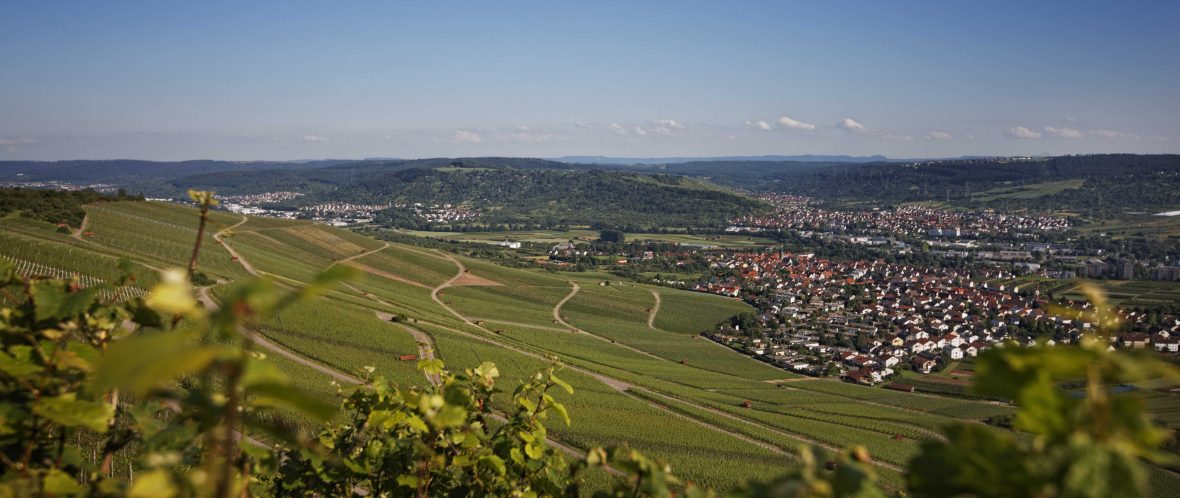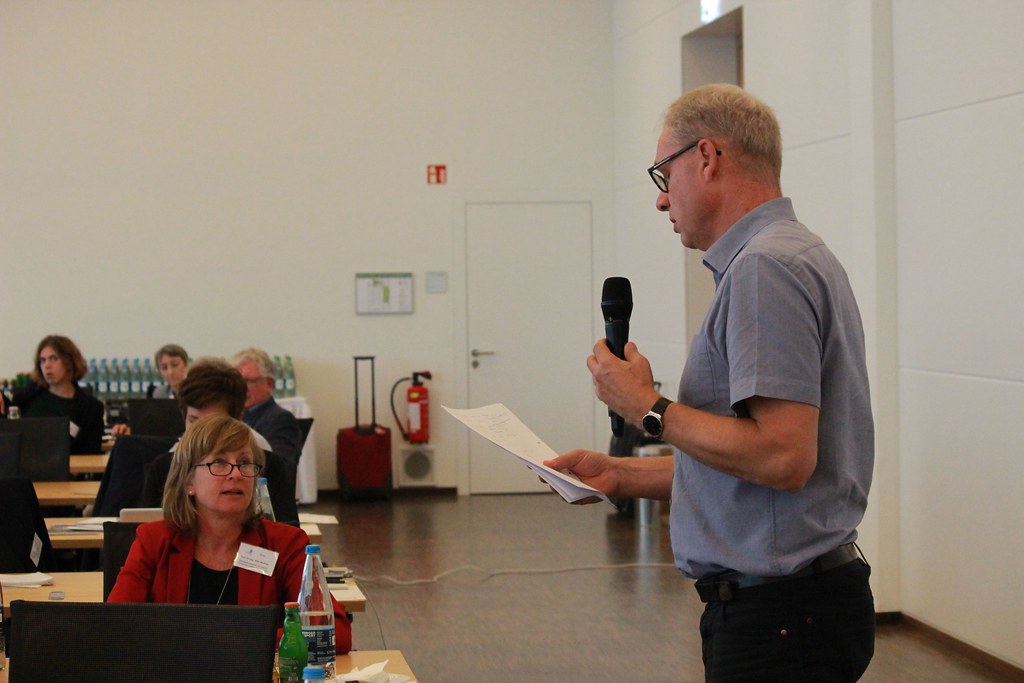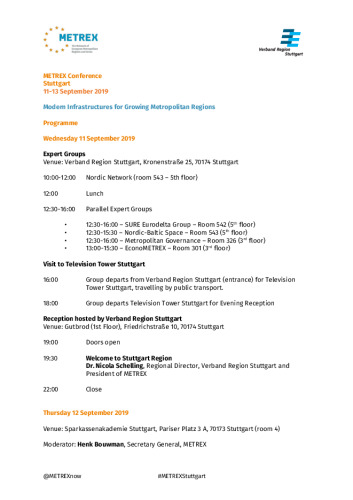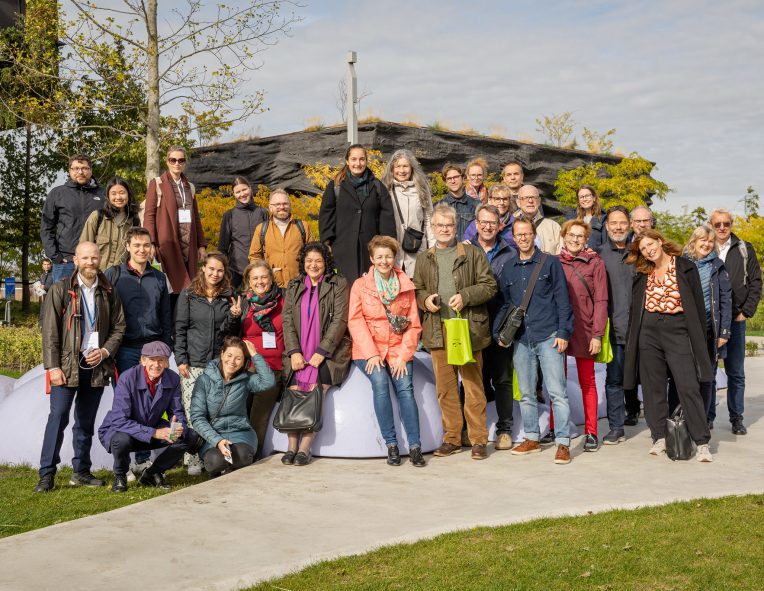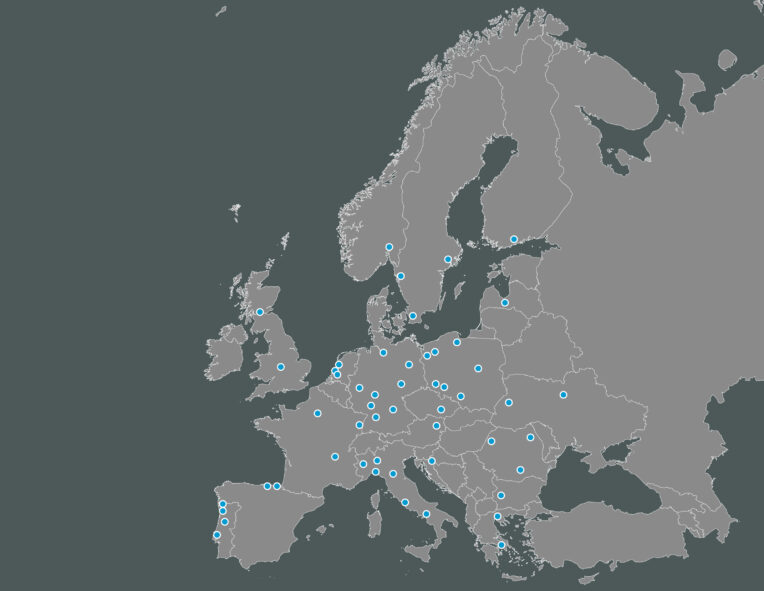Hosted by Verband Region Stuttgart

Images of the Conference and Study Tours
METREX Stuttgart: reports back from the conference
Over three days in Stuttgart, we gained insights from our host, the Verband Region Stuttgart, METREX members and other actors including Arlington Economic Development in the US – who have secured the new Amazon HQ and its 25,000 jobs – on how they provide modern infrastructure for growing metropolitan regions and how this can create the conditions for positive ‘social infrastructure’.
The conference featured a series of plenary sessions covering green, digital and transport infrastructure, as well as study tours to two key projects from within the region – the Stuttgart 21 transport project and the Remstal Garden Show.
On the second day of the conference, we dealt with important metropolitan ‘live’ issues on the EU level, including:
The status quo of the Urban Agenda, for which we heard from Dr. Jan Olbrycht MEP as well as METREX Members on their involvements in the different partnerships within this key EU programme; the formation of the New Leipzig Charter on Sustainable European Cities, which is being pursued during the German EU Council Presidency in the second half of 2020; Revisions to the Territorial Agenda of the EU.
The reporting from the conference and interviews were conducted by Lise Pedersen.
Contents
Stuttgart: in the heart of Europe
Remstal: a unique and inspiring model
Speeding up the digital transition
Creating smarter cities
Cross-border data sharing
The complex metropolitan dimension
Rivalry between actors
METREX: a long-term vision based on trust
Stuttgart 21: a vibrant European hub
Amazon HQ: how to win a bid
Stronger together: sharing challenges and know-how
METREX: a crucial networking tool for EU regions
Stuttgart: looking to the future
Stuttgart: in the heart of Europe
In her opening speech, Stuttgart Verband Region (SVR) president Dr Nicola Schelling gave a comprehensive presentation of Stuttgart region, one of Germany’s most densely populated and prosperous regions which brings together some 179 municipalities. Dr Schelling highlighted its strong economic results, its central location in the heart of Europe, and cast a brief look back at its historic role as the first directly-elected regional parliament in Germany.
Thorsten Englert, manager of the Remstal Garden Show, then took attendees on a virtual tour of his project ahead of the afternoon’s visit.
Remstal: a unique and inspiring model
A remarkable model of local and regional cooperation to revamp green infrastructure and tourism in the region, Remstal is the first garden show in Germany to be jointly organised by as many as 16 towns and municipalities.
“It’s amazing how these municipalities have worked together. It puts the region on the tourism map: very often, people just drive through on their way to Switzerland, they don’t know this valley, and yet it has a lot to offer,” said METREX member Peter Pol, Strategic Urban Planner at the City of the Hague.
An ambitious project aimed at improving the life of locals and drawing visitors to the region, Remstal includes hundreds of kilometres of hiking and cycling trails. A few weeks earlier, Mr Pol had visited Remstal after hearing positive reviews from German work colleagues.
“We enjoyed it very much: cycling, walking, being close to nature. We live in The Hague, one of the most urbanised areas of the Netherlands. Investing in green infrastructure in this way is great for the region’s image and for the quality of life of people who live here. It’s very inspiring,” he added.
The virtual tour of the Remstal Garden Show by manager Thorsten Englert was followed by a peer review from Ed Buijs, Senior Landscape Planner at the Municipality of Amsterdam, who praised Stuttgart as “an outstanding example of integrating a functional city in an attractive agricultural landscape”, a feat he said Amsterdam didn’t match. His presentation included examples of green structures developed at a municipal level such as the international horticultural exhibitions of Almere, Haarlemmermeer and Amsterdam, which he said put the focus on the relationship between urbanism and agriculture.
Later in the day, METREX members were invited to get a taste of Remstal with a stop in the historic town of Schorndorf, one of the garden show’s 16 participants, where they visited stunning parks, art exhibitions and brand new green infrastructure.
Speeding up the digital transition
Addressing the key challenge of meeting the rapidly growing demand for digital services both for corporate and private needs, Hans-Juergen Baade, managing director of Gigabit Region Stuttgart, outlined plans for a public-private partnership to develop the region’s fiber optic broadband infrastructure. The goal is to equip 50 percent of households and all enterprises in the region with FTTH by 2025.
Thierry Petit, senior economist at L’Institut Paris Region, the Ile-de-France’s leading research centre on urbanism, responded in his peer review with a presentation on objectives to accelerate the digital transition in his region, where the number of premises with access to the fibre network grew from 30% in 2016 to close to 80% in the first quarter of 2019.
A member for just under a decade, Thierry Petit is part of the METREX managing committee and founded the expert group EconoMETREX, which focusses on economic challenges for metropolitan regions. It is currently working on the question of retaining firms within big cities.
“That is the future of competitiveness both for our cities and for our industry,” he said. “Market forces mean companies are being forced to relocate on the outskirts of our cities. But in order to find talent, they need to be within reach of big cities. I thought it would be constructive to discuss this problem with other metropolitan areas and see how they are dealing with it. So I took advantage of the METREX network to set up a group, called ‘Planning for industry in larger metropolitan areas’.” The aim is to finalise the report by the end of 2020.
Creating smarter cities
Smart Cities Director at Robert Bosch GMBH, Dr Andrea Bräuning, who heads up the Living Lab innovation network in Ludwigsburg, offered an inspiring presentation on how companies, researchers and municipalities can work together to bring projects to fruition to make tomorrow’s city smarter and more “liveable” for its growing population. Examples included “intelligent” street lighting, sensor-equipped parking places and green walls.
Dr Bräuning’s fascinating presentation was followed by a peer review by Julita Miłosz-Augustowska from the Office for Spatial Planning of Westpomeranian Voivodeship in Szczecin, on the German-Polish border, who addressed the hot topic of data-sharing and harmonisation across Europe.
Cross-border data sharing
In her presentation, “Model of cross-border monitoring”, Julita Miłosz-Augustowska, from the Office for Spatial Planning of Westpomeranian Voivodeship in Szczecin, highlighted the challenges her region faces.
“We are dealing with two nation-states, three federal states, numerous counties and communes. The only way to obtain a consistent picture is to harmonise data because we are dealing with two different state methodologies. Areas of interest include the labour market, education, mobility, tourism and the urban-rural partnership.”
She outlined her region’s data-sharing project scheduled to start in 2020. “We want to create a catalog of indicators for each area that will reflect partners’ needs, by making an inventory of data produced by public and scientific institutions. Next, we want to improve the exchange process and make it more transparent. The goal is to introduce a monitoring system for the German-Polish Metropolitan Area of Szczecin.”
A project consistent with The “Common Future Vision for the Polish-German interaction area 2030”, which sees “the strong social, economic and natural Polish-German area of connections as a common area of sustainable growth” and “an important engine of development in the heart of Europe, also affecting other regions”.
The complex metropolitan dimension
While presentations at the Stuttgart conference addressed the hot topic of data sharing and harmonisation across the EU, successful urban planning faces another major challenge according to many METREX members: while studies show the continuing economic strength of capital regions and metropolitan areas, “the problem is that there isn’t enough focus on the complex metropolitan dimension,” said Peter Austin, Planning Advisor at the City of Oslo and longtime METREX member.
“This is where METREX plays a crucial role: cities cannot do it alone, smaller communities can certainly not do it alone, but together they have a joint responsibility, and networks like this provide an arena to talk about things in a collective way,” he added.
“The urban and the regional dimension offer two very different and complementary perspectives. There are very few people who make them work together, and this is a chance to do so,” he added, with reference to fellow member Jan Olbrycht, MEP for the Polish region of Silesia and president of the URBAN Intergroup at the European Parliament, who was invited to speak about the Status Quo of the Urban Agenda.
Sharing his experience on Urban Agenda Partnerships, Peter Austin gave a presentation on day 2 of the conference on the Urban Agenda Partnership on Circular Economy, outlining 12 actions to promote circular economy in cities.
Rivalry between actors
A Member of the European Parliament for the Polish region of Silesia since 2004, Jan Olbrycht is also president of the URBAN Intergroup at the European Parliament – whose main role is to get urban needs onto the EU agenda – and rapporteur for the next budget (2021-2027).
Invited by METREX to speak about the Status Quo of the Urban Agenda, Mr Olbrycht took time after his presentation for an interview where he described the rivalry between regions, cities and smaller towns, adding that this is where networks like METREX play a crucial role:
“In Europe, we have different actors. The question is whether they are competing against each other. We have city representatives in the Committee of Regions, for example. But we also have a strong culture of associations like Eurocities and METREX, which represent a concrete group of actors and have a very strong influence. The challenge is to make the actors work together, even if their interests are not always the same. METREX is very well known on a European level and its members need it to represent their interests and challenges.”
Listen to the talk by Jan Olbrycht
Read more on: The complex metropolitan dimension
METREX: a long-term vision based on trust
For longtime METREX member Peter Austin, Planning Advisor at the City of Oslo, the network’s success boils down to a few key ingredients.
“It is very much based on openness and trust. It provides an arena to discuss things that are actually very complex, to test ideas and re-examine our own experience. The breadth of shared experience is enhanced by the long-term connections you build up within the network.”
Peter Austin has been taking part in METREX meetings since the very beginning, in 1996. A convinced European, he said “the added value of this network is the continued rediscovery of the quality of people who have an intuitive international perspective on everything they do.”
This long-term, international vision is what has driven veteran METREX member Douglas Gordon throughout his career as an architect and international coordinator at Helsinki’s city planning department. For years, Mr Gordon headed METREX’ Nordic-Baltic expert group, with the aim of improving sustainable regional competitiveness and cooperation. His recent achievements include bringing forward plans to build a rail tunnel between Helsinki and Tallinn as part of the PolyMETREXplus project.
“Being involved in METREX has had a very strong impact on the development of Helsinki both as a city and a region: from 2004 to 2008, a highly innovative project was created on polycentricity, which was a key theme of the EU territorial agenda. This PolyMETREX project helped teach cities and regions to work together, and initiated our new strategic plan. Its primary focus was to make the city of Helsinki engage with surrounding municipalities and develop a similar vision for the future.”
Douglas Gordon, who retired this year but remains an honorary METREX member, explained how the strategic plan prompted change in the Finnish legislation, leading to a new city regional plan involving a record number of 14 municipalities, which has succeeded in regulating the urban sprawl and improving quality of life for the region’s inhabitants.
Interview with Douglas Gordon, former member of the METREX Managing Committee and City of Helsinki
Read more on The complex metropolitan dimension and Rivalry between actors.
Stuttgart 21: a vibrant European hub
Ahead of a visit organised for METREX members, project manager Manfred Leger gave a presentation of the Stuttgart 21 and Stuttgart-Ulm high-speed line project, due for completion in 2025. He outlined the project’s mission – completion of the European high-speed railway axis from Paris to Bratislava – and it primary objectives: connecting economic regions in Europe and regional areas in southern Germany and creating urban development opportunities in Stuttgart with more green space, housing and jobs.
In her peer review, Dr. Cecilia Braun, Infrastructure and Mobility Project Manager for the Metropolitan region Rheinland, presented plans for the future of Cologne’s railway node, which places her region firmly at the heart of Europe along the Rhine Alpine corridor.
Members who wished were later invited to don safety footwear and helmets and go on a journey into the bowels of the impressive S21 railway project to experience its development firsthand.
Amazon HQ: how to win a bid
Guest speaker at the Stuttgart conference, Marian Marquez, acting director of Business Development for Arlington Economic Development in the US, offered an inspiring presentation of her region’s successful bid to secure the new Amazon headquarters and its 25,000 jobs. Ms Marquez described how Arlington won the tender thanks to key assets like proximity to the capital, an extensive transportation network and a highly educated workforce, which made it the ideal host for the Amazon project.
Asked what she would be taking home from the METREX conference, Ms Marquez said the European model of cooperation was an inspiration:
“As I heard the presentations on everything from parks to railways, I realised just how much we have to learn from the group (METREX) and from Europe, which, under its history, has had to really learn how to work together and ignore the boundaries between countries. That’s something we’re just learning to do in our region.”
Interview with Marian Marquez, acting director of Business Development for Arlington Economic Development
Stronger together: sharing challenges and know-how
While European cooperation is a source of inspiration on the other side of the Atlantic, when it comes to scale, Europe has a lot to learn from its regional counterparts in the US or in China. That’s according to Urban Planner Peter Pol and Erik Pasveer, head of the planning department in The Hague. Both are part of METREX’ recently-founded SURE-Eurodelta group, which brings together cities and regions from four countries: France, Belgium, Germany and The Netherlands.
“On a global scale, ours is similar to areas the size of Washington, Boston or Shanghai – that’s 50 to 60 million inhabitants, a market with huge economic potential. Our joint earning capacity is much stronger, to pay the bill of energy transition, climate change etc,” explained Mr Pasveer.
They are working on a joint project for shared programmes between the group’s metropolitan regions in fields ranging from climate change to migration and sustainability.
“The idea is to highlight urgent issues in our area and see how we can build on best practice to find solutions,” said Mr Pasveer. “We are working on this benchmark with other mega regions in the world, in America and China, to understand what specific challenges we share and how our global competitors are dealing with them.”
“Let me give you an example,” he offered. “If you’re in Köln, and the banks of the Rhine are flooded, you know that further down the river, in Rotterdam, the banks will be flooded too. We’re all connected when it comes to climate change: flooding is the result of glaciers melting in Switzerland.
“The group is also an opportunity to work together on joint projects,” he added. “A good example is the city of Eindhoven – a high-tech area which needs highly skilled workers. Top universities in cities like Aachen and Düsseldorf can provide these employees. So the idea is to develop high-speed rail connections between them. And a high-speed link would boost economic development in the entire region.”
METREX: a crucial networking tool for EU regions
The work of expert groups like SURE-Eurodelta is what drew some attendees to the Stuttgart conference: Sven de Bruckyer works for the Brussels-based study centre Perspectives, which focuses on territorial strategy for the Brussels-Capital region. While not (yet) a METREX member, he explained why it was important for him to come to Stuttgart.
“We’re looking to be a part of the SURE-Eurodelta group because we all belong to the same economic area, we’re just a few hours away from each other on the train (editor’s note: many METREX members favour train over air travel for environmental reasons). It’s interesting for us to exchange with other cities that are more evolved than us, we have a lot to learn from Amsterdam and German cities, especially when it comes to sustainability, the circular economy and green infrastructure.
“In Brussels, we are like a little island with an increasingly dense population, and we need to work on preserving our landscapes, together with our Flemish neighbours – that requires metropolitan cooperation,” explained Sven. “On an international level, it is crucial for a region like Brussels to look towards the outside world. Sometimes, we suffer from a culture of isolation, and it’s important to listen to other cities that are confronted with problems similar to ours.”
Stuttgart: looking to the future
Rounding up the day’s plenary sessions, Thomas Kiwitt, head of SVR’s department of regional planning, provided a summary of the challenges facing the region’s infrastructure, financing and governance, highlighting the Amazon headquarters successful bid as a prime example of how to attract investors and create jobs on a regional scale.
Main feature image: © Verband Region Stuttgart/G. Stoppel

